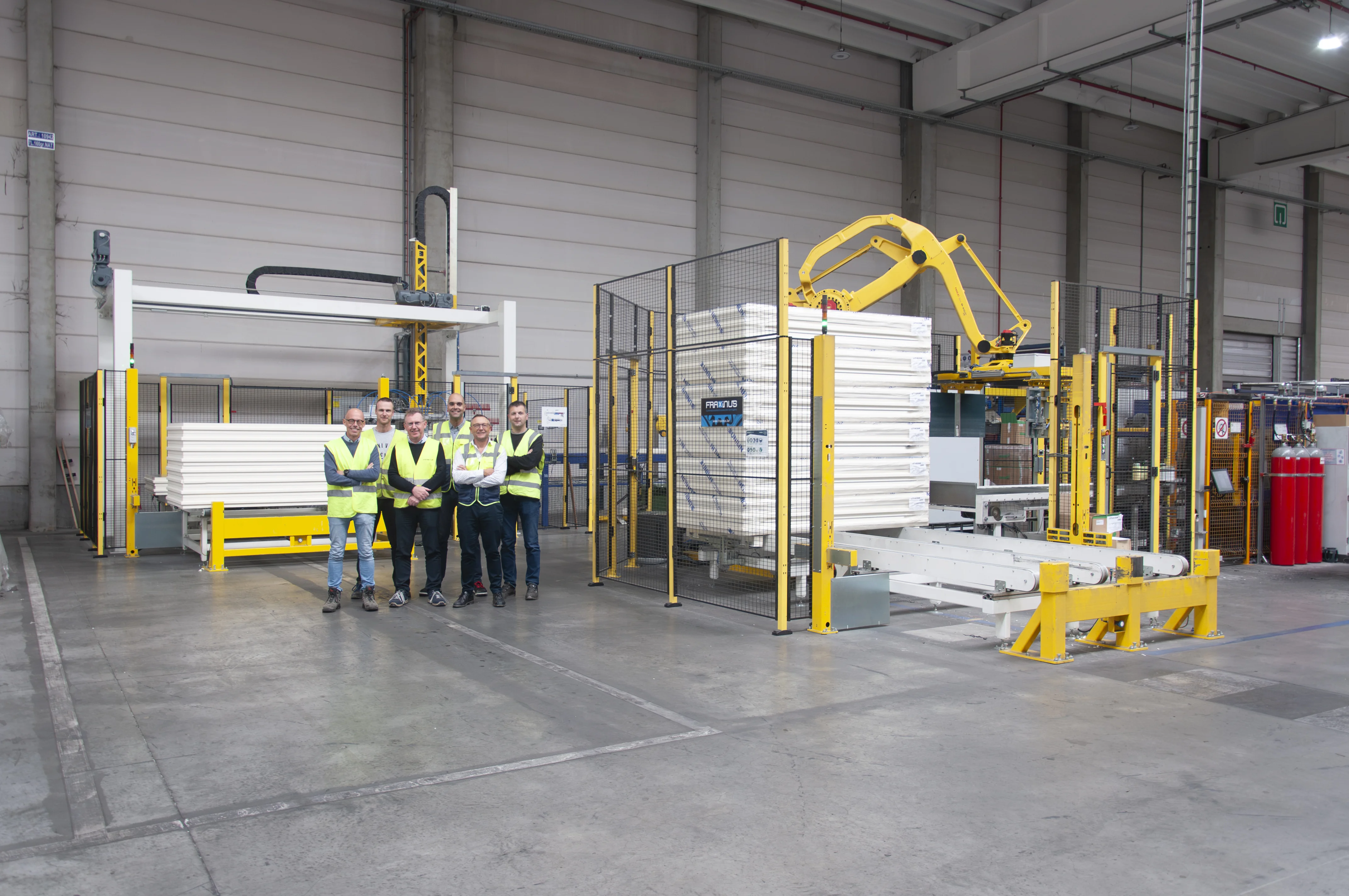First of all, can you walk us through the automation process?
Sam: “The purpose of the new system is to glue the underlay onto the insulation boards (2400 x 1200 mm) and then to pack them for storage in the warehouse. This process used to be managed by several operators working on two completely independent machines. The machine for gluing the underlays came from another plant and we made various upgrades to it, particularly in terms of safety, so that we could keep using it here. Once the underlay had been glued to the boards, they were stacked into piles 500 mm high and taken by an operator to the existing packing machine where they were shrinkwrapped. The packs were then stacked manually and an operator secured a base block beneath the bottommost pack to make it easy for the forklift to pick up the stack. It was clear to us that this process could be made much more efficient, and since we’re seeing a steady increase in demand for the product, we asked Fraxinus to take a look at it.”


